Somehow, Clifton Daniel was there. It was the 50th anniversary of The Hoya, and the managing editor of The New York Times was at the party at 1789 to help celebrate that milestone. As a lowly headline editor, a position I shared with another freshman, Paula Feeney, I was not one of the organizers of the party, so I have no idea how The New York Times luminary happened to be there — some of the editors had friends in high places, I suspect. And I don’t remember whether his famous wife, Margaret Truman, daughter of President Harry Truman, was in attendance. All I remember is that the atmosphere was elegant, the conversation crackled and the food was a lot better than what any of us were used to. It was the male world that was The Hoya in 1970 on high display, a world that would see itself start to fissure in the next few years.
The fall of 1969 had seen the first group of women enter the College of Arts and Sciences. There were already women on campus in the School of Nursing, the School of Foreign Service, and the School of Languages and Linguistics, but the College had been a male bastion until the 50 of us arrived. I knew from the first week on campus that I wanted to be involved with The Hoya. I wasn’t brave enough to walk into the office and ask to cover a news story, so I somehow ended up writing headlines. I spent long Sunday nights in the office reading news and sports copy, trying to come up with attention-grabbing heads.
In the dingy room that was The Hoya office in the Copley Hall basement in those days, some very smart guys held court — and I did a lot of listening. I was in awe of veteran editors Charley Impaglia, Don Casper, Jim Duryea, George Condon, Don McNeil, and later Bob Bruso and Don Hamer and the clever way they tossed around ideas, toyed with them, and made fun of each other and pretty much everyone else on campus. They were good writers and nimble talkers, great examples of Georgetown University linguistics professor Deborah Tannen’s observation about how men use talk to establish hierarchy — how, for men, conversation is a competitive sport.
Even though I felt intimidated, I learned a lot from these guys. For one, I learned to distinguish a good idea from the fair amount of intellectual pretension that often passed for discussion — while at the same time enjoying the verbal bravado! But I also learned to put myself forward. By spring, I had worked up the courage to ask for a story assignment and news editor Duryea had me report on the campus reaction to the hiring of the new dean of the School of Foreign Service, Peter Krogh. From there I traded on my English major credentials to review plays, first at Mask and Bauble, then at other Washington, D.C. theaters. These baby steps were encouraged most of all by Features Editor Paul Bernabeo, a brilliant but quiet guy who didn’t feel he had to join the conversational fray. When he left his position as head of features — what the arts and entertainment section was called at the time — he tapped me, a sophomore, for the job, the first time a woman had held that position. I studied in Dublin my junior year, so I wasn’t in touch with things at the paper while I was away. But when I returned from Ireland, The Hoya was a different place. The guys who had dominated the conversation had graduated, and the paper had already had its first female editor-in-chief, Bernadette Savard. The men’s club atmosphere was gone.
This is not to suggest that the barriers for women disappeared in those four years. In fact, some of those barriers were deeply internalized. I had forgotten — until I recently looked through some old copies of The Hoya — that I had signed several articles using only my last name and the initial of my first name, disguising the woman’s voice to give it more credibility. But the emergence of female writers on The Hoya in the first few years after that glittering 50th-anniversary celebration represented a sea change for that publication and a challenge to The Hoya’s male culture.
Elaine Brousseau (CAS ’73) is a former features editor of The Hoya.


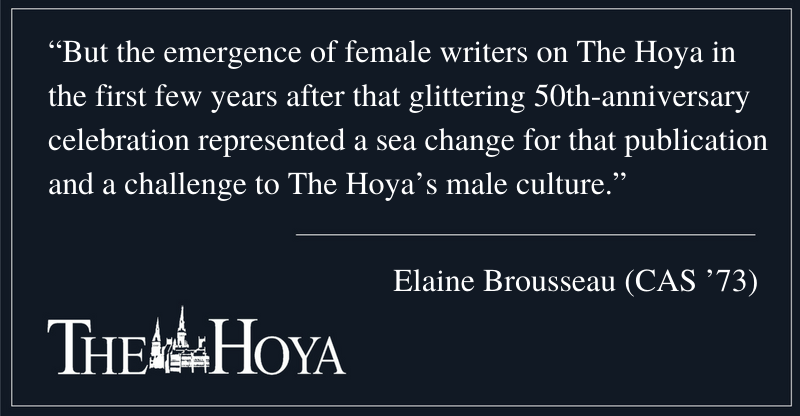











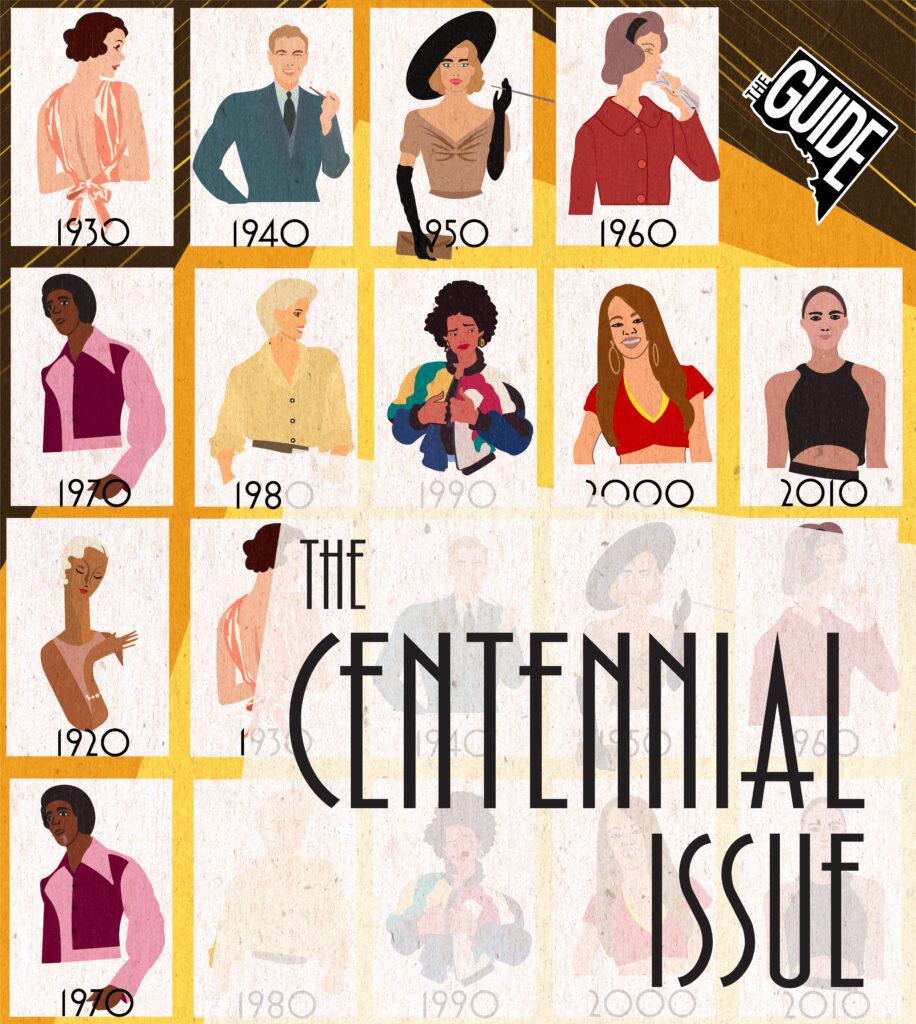
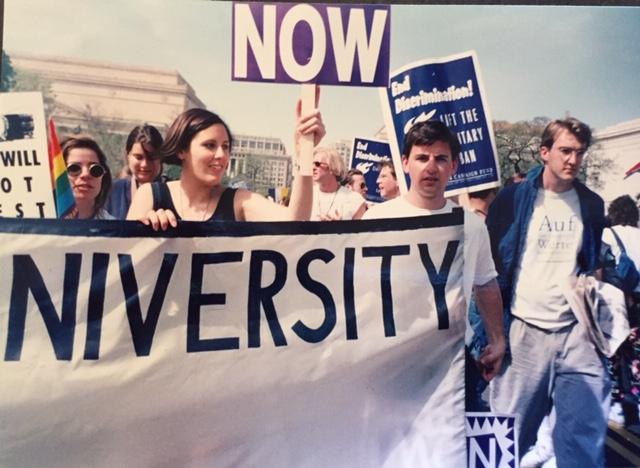
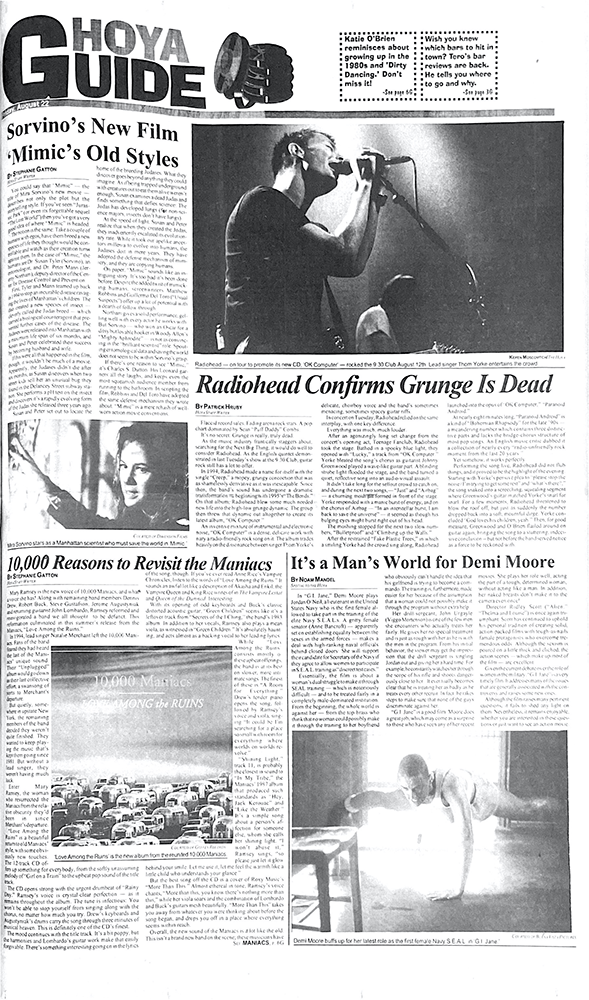
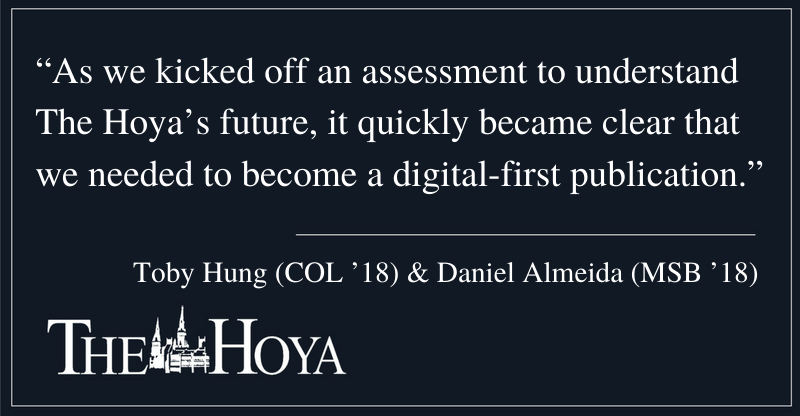
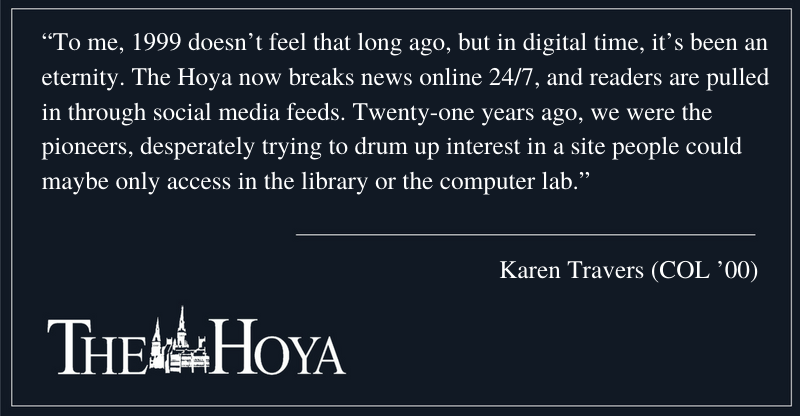
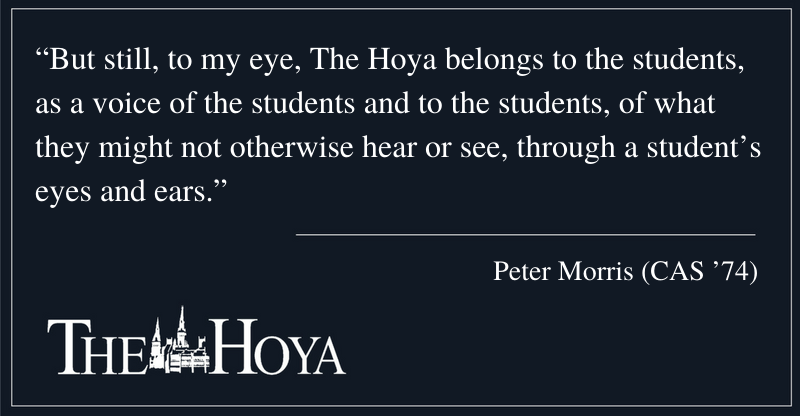

Paul Bernabeo • Sep 30, 2020 at 12:42 pm
How pleasant to run across this beautifully written reminiscence by Elaine Brousseau. Those were heady and formative days at The Hoya. Paul Bernabeo